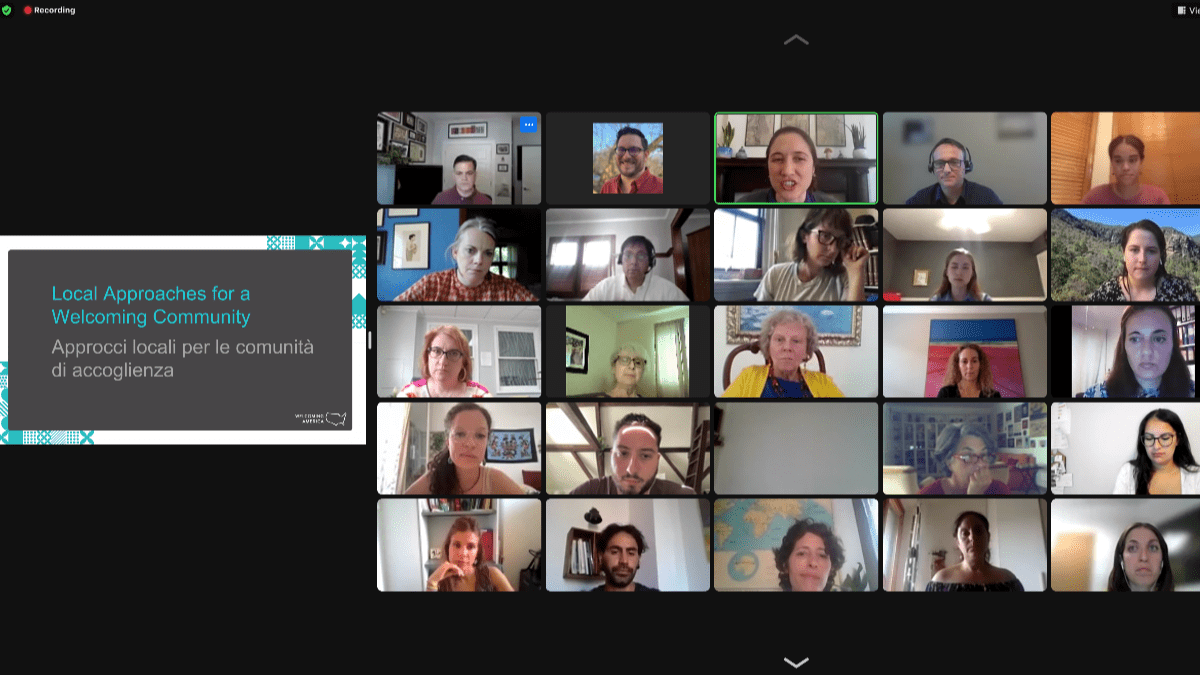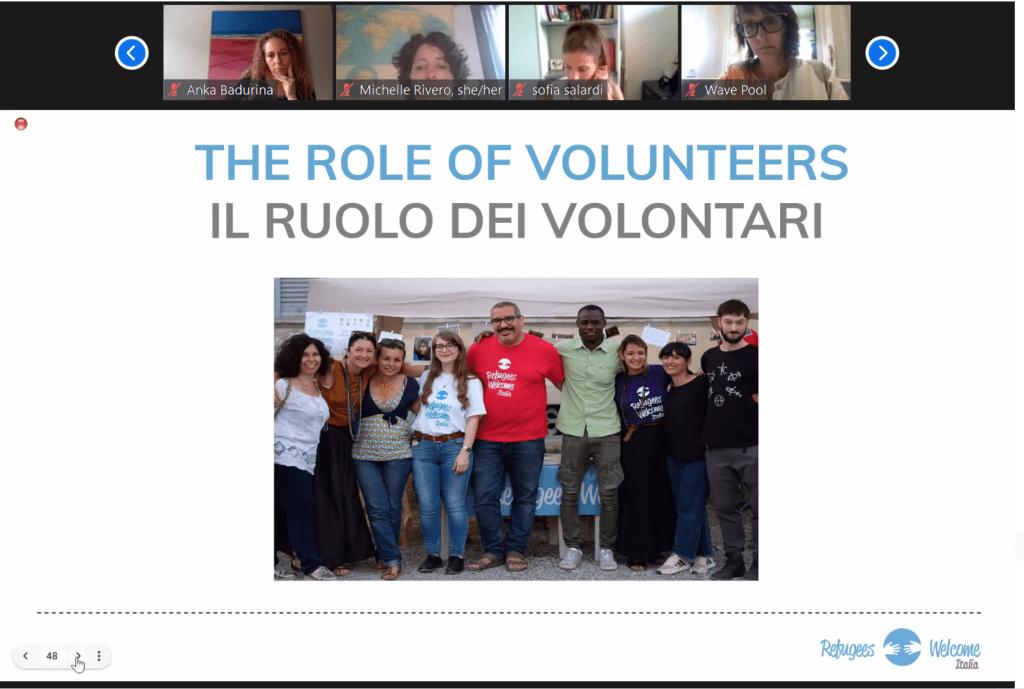
The migration of people has occurred since the beginning of human history, but in the past five decades, the number of people migrating to other countries has increased three fold, according to the International Organization for Migration. This includes people seeking asylum and migrating to Europe. In 2020, 40 percent of asylum seekers and migrants to the continent arrived in Italy. Meanwhile, the United States continues to be the main destination for migrants.
Both the U.S. and Italy experienced renewed efforts to welcome people migrating with the fall of Afghanistan in 2021 and the Russian war in Ukraine this past February. As people arrived in their new communities, who was there to help? What approaches did communities take to activate individuals to be part of the welcome response?
Community navigator and mentoring programs are just some of the ways to welcome newcomers effectively and holistically. This past year, Welcoming America administered the US-Italy Welcoming Communities Exchange in cooperation with the International Rescue Committee and Refugees Welcome Italia with the support of the U.S. Embassy in Rome. The exchange brought together migrant inclusion practitioners for meaningful peer-to-peer learning about community navigator and mentoring models in the U.S. and Italy.
Photo description: Screenshot from a session of the virtual exchange which was conducted in English and Italian. Photo by Anna Lodeserto.
Here is a recap and some takeaways. Please note: In this program, the term “migrant” was used to refer to people who have moved from one country to another under any migration status, e.g. refugee, asylum seeker, temporary work visa, undocumented, or other status.
Leveraging mentors and community navigators
At the local level, many communities have an ongoing need for people who can help newcomers navigate services, but do not always have the resources to employ individuals full-time to do the work.
Mentoring and community navigator models are two related, but different community-based approaches to ensure migrants can access the necessary resources to thrive socially, civically, and economically in their new homes.
Generally speaking, mentoring (sometimes called “accompaniment”) tends to emphasize a mutual relationship of friendship or mentorship between a newcomer and a person who is more established in the community. An example of a mentoring model is Refugees Welcome Italia Mentoring.
Community navigator (sometimes called “natural helper” or “promotores”) models often share characteristics with mentoring models, but tend to emphasize recruiting leaders from migrant communities. Examples of community navigator programs include Portland Natural Helpers Leadership Program and National Partnership for New Americans Community Navigators.
One participant from the U.S. said being able to hear from people who are in this work, and seeing success but also having similar struggles was helpful. “It was good to hear about the community navigator program in Boise, Idaho, and the many different ways that people have integrated mentoring into their programs,” they said.
🥳We are proud that our #OIS is a part of the US-Italy Welcoming Communities Exchange Program!
The USWCEP brings together migrant inclusion practitioners for meaningful peer-to-peer learning about community navigator and mentoring models in the U.S. and Italy. pic.twitter.com/OEqX3Rft8t— CatholicCharitiesETN (@CCEastTN) June 16, 2022
Connecting community leaders in the U.S. and Italy
Through three virtual exchange sessions in June, 50 participants from the U.S. and Italy shared local examples, best practices, and suggestions for implementing a mentoring or community navigator model as part of welcoming strategies. Participants ranged from intercultural mediators to nonprofit leaders to municipal officials based in the United States or Italy.
One participant said the most helpful takeaway from the exchange was the amount of resources between the U.S. and Italy available for connecting, networking and sharing ideas. “We now have even more trusted resources of knowledge to keep improving the figure of mentors and their impact in migrant integration projects,” they said
Several participants were inspired by the exchange to take concrete actions following the program. Luciana, a social integration worker in the Italian city of Perugia, said she plans on submitting a proposal for a project that facilitates better access to higher education for migrants.
“The mentor figure is crucial for the project, and I wish to implement the experience from both the U.S. and Italy,” Luciana said. “Obviously the work does not stop here — the University [of Perugia] is committed to continue funding projects that foster inclusion and promote diversity. Personally, I believe that networking and joining forces is key to achieving our common goals and objectives.”
As migration continues around the world, communities that choose to welcome can become more effective through models like community navigators, mentoring, and learning from peer nations addressing similar challenges.
To learn more about these and other good practices for building welcoming communities, check out national standards for inclusionary policies and programs from around the world, including the U.S. version of the Welcoming Standard.

